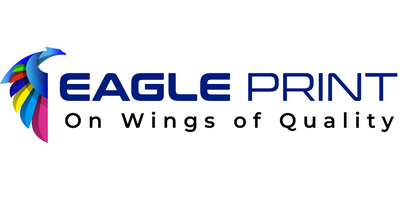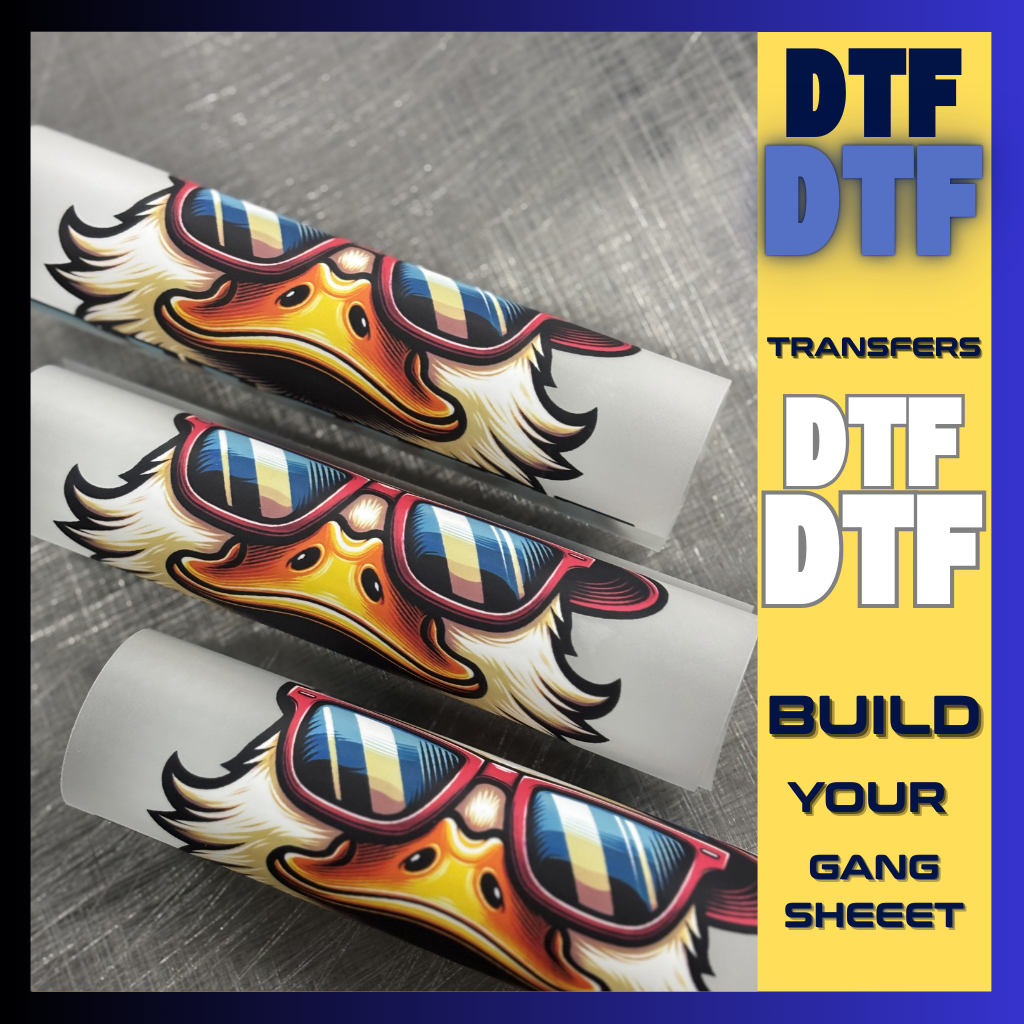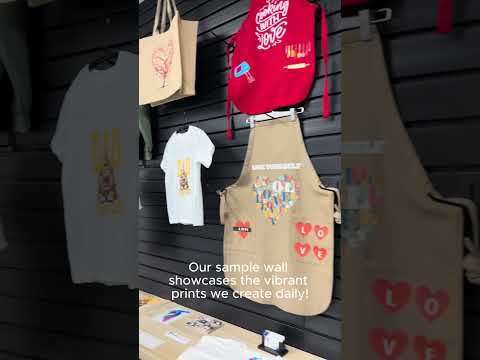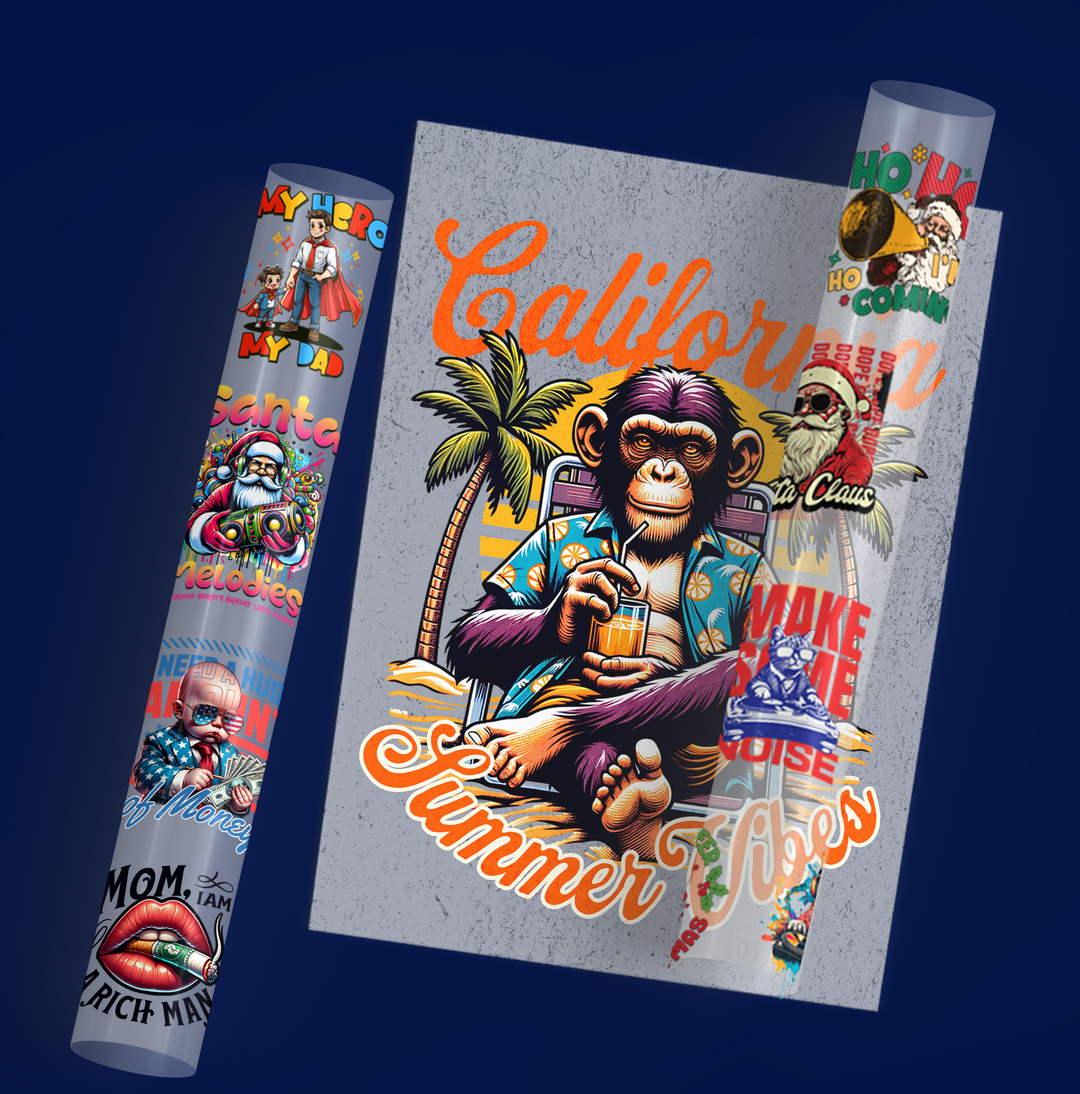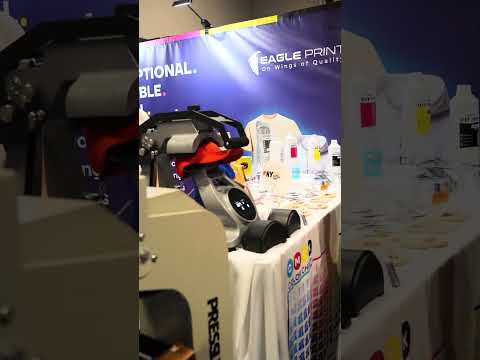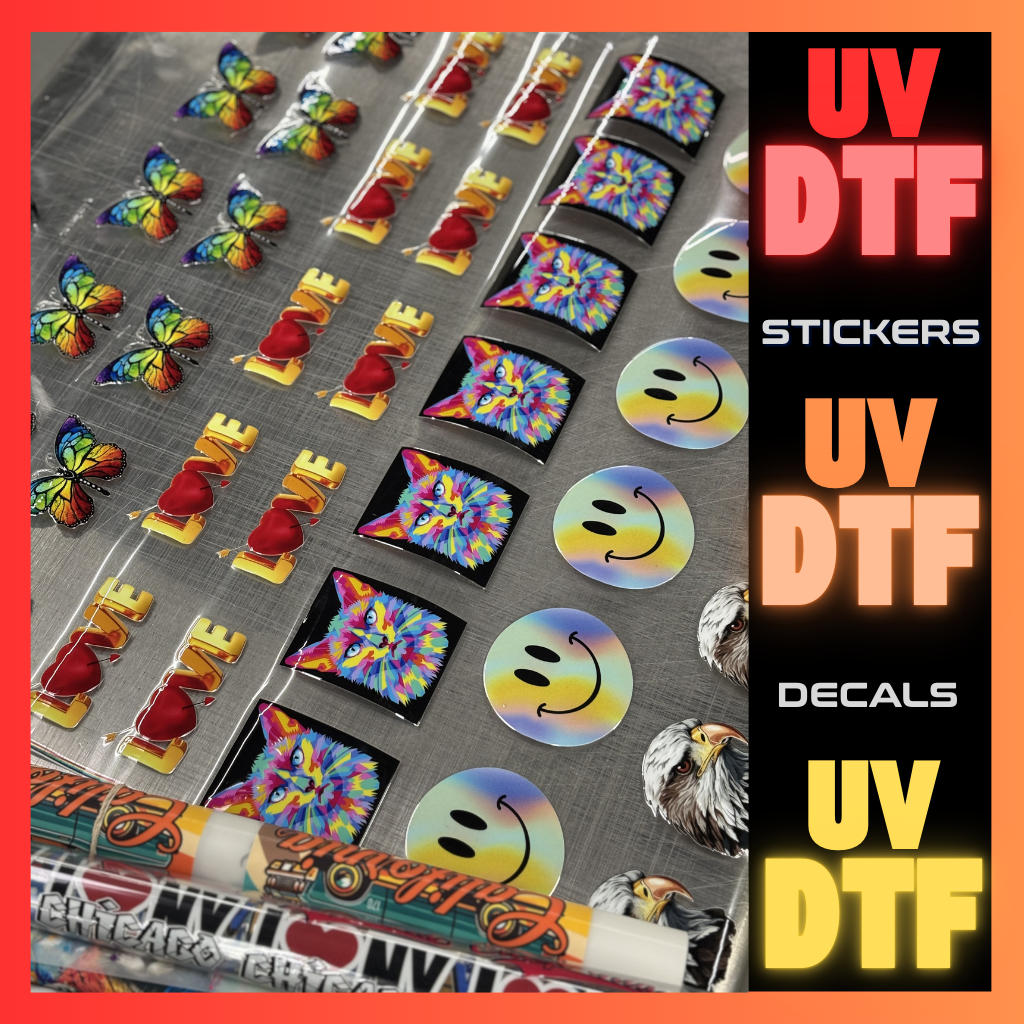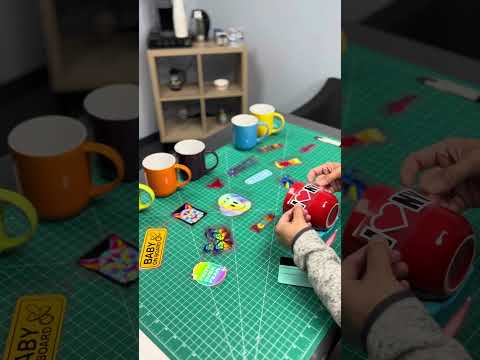Cómo crear transferencias DTF: una guía completa
La impresión DTF (Directo a Película) es una tecnología revolucionaria que permite imprimir diseños duraderos y de alta calidad en diversos tejidos. Este proceso es cada vez más popular en la industria textil personalizada gracias a sus colores vibrantes, su fuerte adhesión y su compatibilidad con una amplia gama de tejidos. En esta guía, le explicaremos paso a paso cómo crear una transferencia DTF.
1. ¿Qué es la impresión DTF?
Cómo crear transferencia DTF: un método en el que los diseños se imprimen en una película especial, se cubren con polvo adhesivo y luego se transfieren a la tela mediante una prensa térmica. A diferencia de la serigrafía tradicional o la impresión DTG (directa a prenda), la DTF funciona en diversos materiales, como algodón, poliéster, mezclas e incluso cuero.
Ventajas de la impresión DTF
- Versatilidad: Funciona en múltiples tipos de tejidos.
- Durabilidad: Las transferencias son duraderas y lavables.
- Rentable: requiere menos tinta en comparación con DTG.
- No necesita tratamiento previo: a diferencia de la impresión DTG, no se requiere tratamiento previo.
2. ¿Qué necesitas para crear una transferencia DTF?
Antes de comenzar, asegúrese de tener los siguientes suministros esenciales:
Equipos y materiales necesarios
- Impresora DTF: una impresora de inyección de tinta modificada diseñada para DTF.
- Película DTF: Una película especial de PET (tereftalato de polietileno) transparente.
- Tintas DTF: Tintas pigmentadas base agua (CMYK + Blanco).
- Polvo adhesivo: un polvo fino que ayuda a que la tinta se adhiera a la tela.
- Prensa térmica: se utiliza para transferir el diseño a la tela.
- Software: Software RIP (Raster Image Processor) para gestión y diseño de color.
3. Guía paso a paso para crear una transferencia DTF
Preparación del diseño
- Crea tu diseño: utiliza software de diseño gráfico como Adobe Photoshop, Illustrator o CorelDRAW.
- Utilice alta resolución: asegúrese de que su diseño tenga al menos 300 DPI para obtener una impresión nítida.
- Reflejar la imagen: dado que las impresiones DTF se transfieren, el diseño debe reflejarse antes de imprimir.
- Prepárese para la tinta blanca: asegúrese de que el diseño incluya una capa base blanca para lograr opacidad.
Impresión en película DTF
- Cargue la película: inserte la película DTF en la impresora con el lado recubierto hacia arriba.
- Utilice la secuencia de colores correcta: primero, la impresora coloca tinta CMYK, seguida de una capa de tinta blanca.
- Optimizar la configuración de tinta: ajuste la densidad de la tinta en el software RIP para obtener colores vibrantes.
Paso 3: Aplicación del polvo adhesivo
- Espolvorear polvo adhesivo: mientras la tinta aún esté húmeda, cubra uniformemente el diseño impreso con polvo adhesivo DTF.
- Sacuda el exceso de polvo: asegúrese de que solo quede una capa fina sobre la impresión.
- Curar el polvo: utilice una prensa térmica o un horno para derretir y activar el adhesivo.
Transferencia del diseño
- Precalentar la tela: Presione la tela durante 5 segundos para eliminar la humedad.
- Coloque la transferencia: coloque la película DTF (con el lado de tinta hacia abajo) sobre la tela.
- Aplicar calor: configure la prensa térmica a 320 °F (160 °C) durante 15 segundos con presión media.
- Despegar la película: espere a que la impresión se enfríe antes de despegar la película.
Post-prensado para mayor durabilidad
-
- Vuelva a presionar el diseño: cubra el diseño con papel pergamino y presione durante otros 5 a 10 segundos para una mejor adhesión.
- Déjalo enfriar: deja que la prenda repose antes de empaquetarla.
4. Mejores prácticas para transferencias DTF de alta calidad
- Utilice tinta y película de alta calidad: los materiales baratos pueden provocar grietas y colores apagados.
- Optimizar la configuración de impresión: ajuste el flujo de tinta y los perfiles de color en su software RIP.
- Distribución uniforme del polvo: un polvo adhesivo desigual puede provocar una mala adhesión.
- Guarde las transferencias de forma adecuada: mantenga las hojas DTF en un ambiente seco para evitar daños por humedad.
5. Solución de problemas comunes de impresión DTF
| Asunto | Posible causa | Solución |
|---|---|---|
| Colores descoloridos | Baja densidad de tinta | Ajustar la configuración de tinta en el software RIP |
| Manchas de tinta | Demasiada tinta o impresión húmeda | Reducir el flujo de tinta y dejar secar la impresión. |
| Mala adherencia | Aplicación desigual del polvo | Asegúrese de que el recubrimiento en polvo y el curado sean uniformes |
| La película no se despega | Baja temperatura de prensa de calor | Aumentar la temperatura a 320°F |
7. Recursos externos para aprender más
- Guía de impresión Eagle DTF : tutoriales y suministros paso a paso.
- Foros de impresión DTF : debates comunitarios y sugerencias para la solución de problemas.
-
Tutoriales de YouTube : guías visuales para dominar la impresión DTF.
8. Conclusión
Cómo crear transferencias DTF: una excelente manera de producir impresiones de alta calidad para ropa y accesorios. Siguiendo el proceso correcto, utilizando materiales de calidad y optimizando la configuración de impresión, puede lograr resultados duraderos y vibrantes. Tanto si es principiante como si tiene experiencia en una imprenta, la impresión DTF es una tecnología potente que puede ayudarle a expandir su negocio de personalización.
¿Necesitas ayuda para elegir el mejor software o método para crear transferencias DTF? ¡Avísame! 🚀

